Pensioners' listed thatched cottage 'falling down around them'
- Published
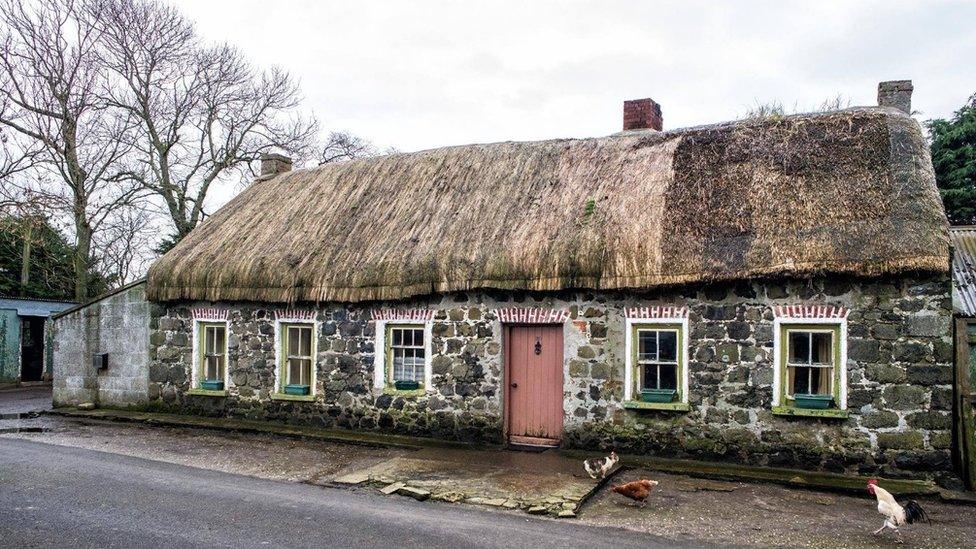
The house is believed to be the last marram grass-thatched cottage on the island of Ireland
Two pensioners who live in a cottage that was listed without their consent say it is falling down around them as they cannot afford to repair it to the required standards.
Edward and Eileen Quigley, a brother and sister in their 70s, live in a thatched cottage near Magilligan on Northern Ireland's north west coast.
Seacoast Cottage has been owned by their family for four generations.
It has no electricity, running water, central heating or indoor toilet.
'Simple but happy'
The pensioners have lived in much the same way as their ancestors, with none of the trappings or comforts of modern life.
However, now elderly and having suffered poor health, they face a bill of about £130,000 just to keep a roof over their heads in the 300-year-old building.
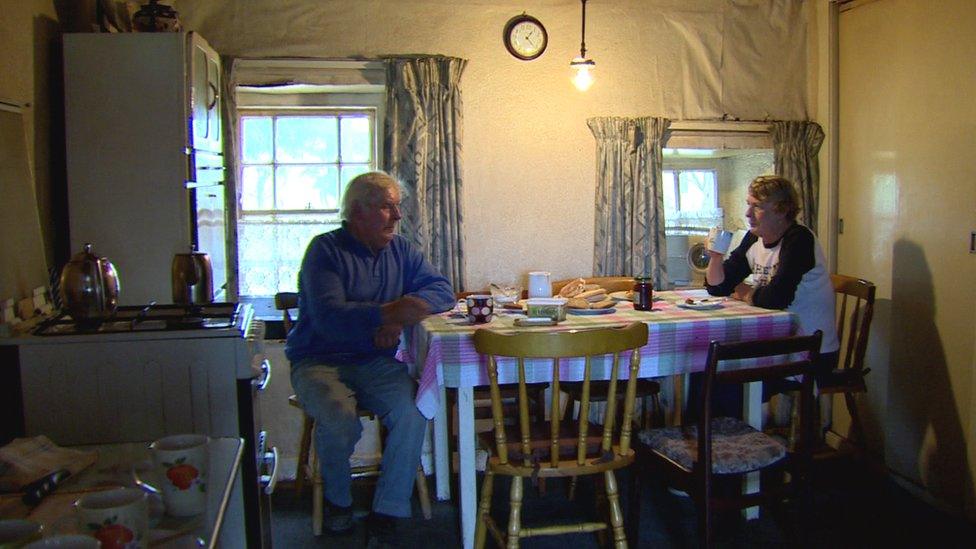
BBC Newsline visited Edward and Eileen Quigley in their gas-lit kitchen last year
Their nephew, Mark Canning, said: "My aunt and uncle are being forced to live in squalor."
He said a storm blew the roof off Edward's bedroom one night in 2014.
"My uncle was in bed and felt something wet hitting him in the face and he got up and went out the door.
"As he got out the door, the whole thing came down, but if he had've been caught in there, he definitely would have been killed."
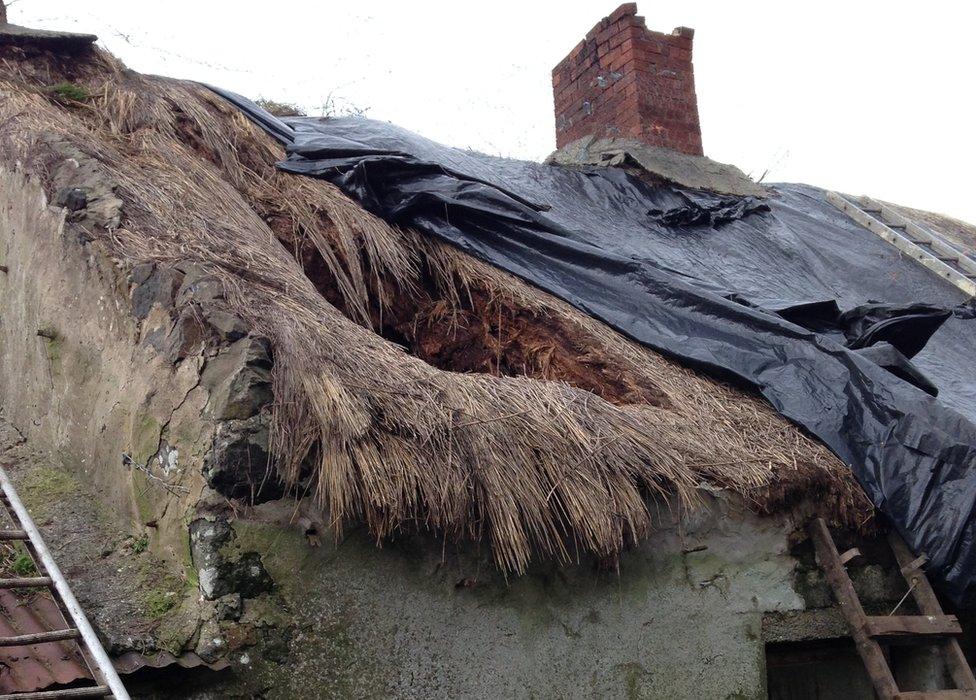
A storm blew part of the roof off Edward Quigley's bedroom in 2014
Repairing the roof to keep the rain and wind out has become mission impossible for the pensioners.
It is thatched with marram grass - a spiky plant that grows in coastal areas.
Historical significance
In fact, Seacoast Cottage is believed to be one of the last remaining examples of a marram grass-thatched building on the island of Ireland.
Its historical significance meant the cottage was listed as a protected building - but the family say that was done against their will.
"My aunt had a stroke a number of years back and my uncle was granted a replacement dwelling, external from the Housing Executive," Mr Canning told BBC News NI.
"Then the Department of Built Heritage actually blocked it, because they listed the building."
In his younger years, Mr Quigley kept up the family tradition and re-thatched the roof himself, but he is now prepared to buy a cheaper tin or slate roof to keep out the rain and cold.
Any alterations require Listed Building Consent as well as planning permission, according to Stormont's Department for Communities.
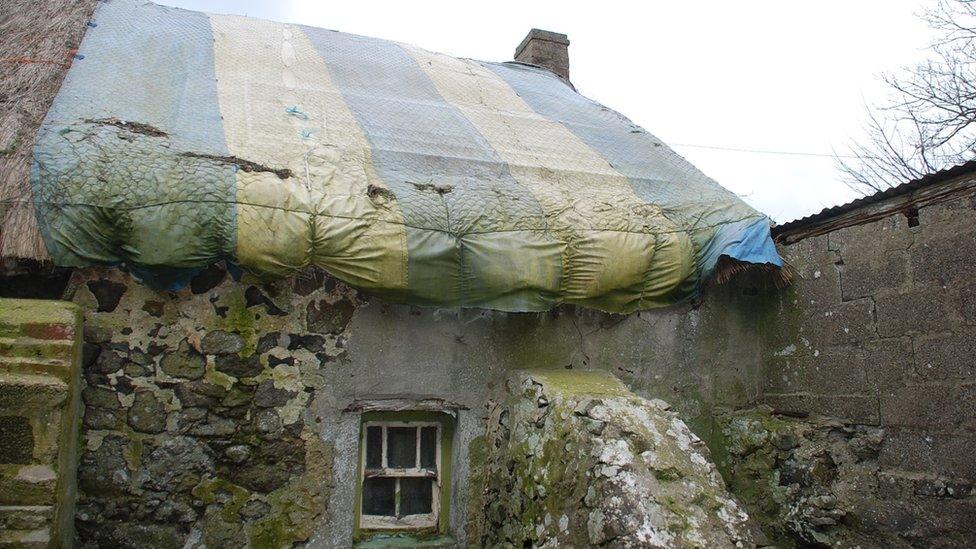
A cattle gate, covered with canvass, has been used as a temporary roof repair
"A slate roof could be put on the cottage for £10,000, but because of the listing, the thatch needs to be maintained," Mr Quigley told the Belfast Telegraph, external.
"Fixing this will cost over £100,000 alone. We can't touch the windows without listed building consent otherwise we could get a heavy fine and even a jail sentence."
'Terrible situation'
Their nephew told BBC News NI that part of the house is inaccessible due to the storm damage.
"The roof has actually collapsed into two rooms at the back. One of the rooms is still useable but the other room is not useable because the roof timbers have come in" Mr Canning said.
"So, we have basically put a farm gate over the hole and then put lorry canvass over the top of it. It's a terrible situation."
Mr Canning has been fighting to save their home for the past few years, but said he has been shocked by how the case has been handled.
He said that the listed status is holding up even basic emergency repairs.
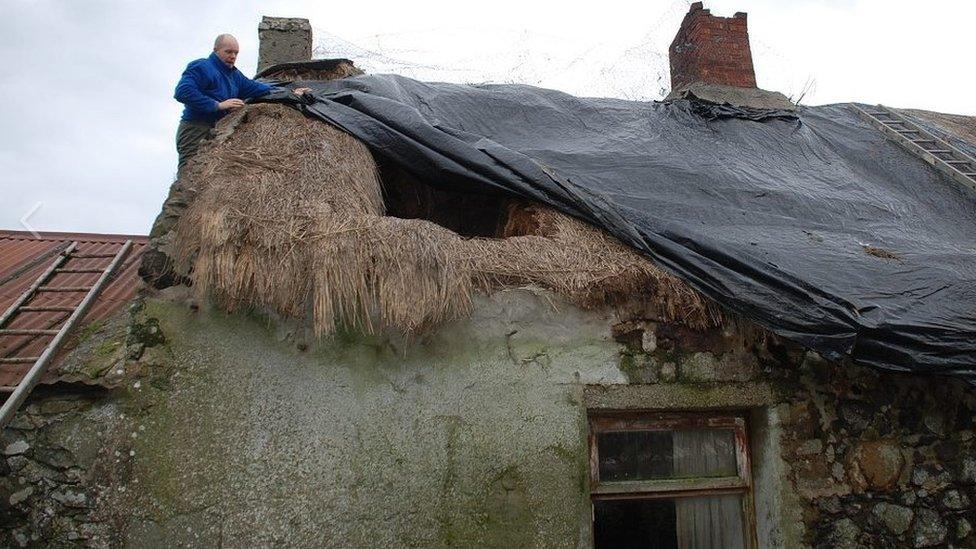
The pensioners' nephew is leading the campaign to save their home from dereliction
Last year, the family was offered a government grant of £50,000 towards the cost of listed building repairs, but this left his aunt an uncle having to raise £86,000.
"The total cost of works is around about £130,000 and that's not to do anything fancy - that's just to leave the property safe and dry," Mr Canning said.
He explained the quote includes replacing the damaged roof timbers, rebuilding a structurally damaged wall and repairing windows which are "currently letting in water".
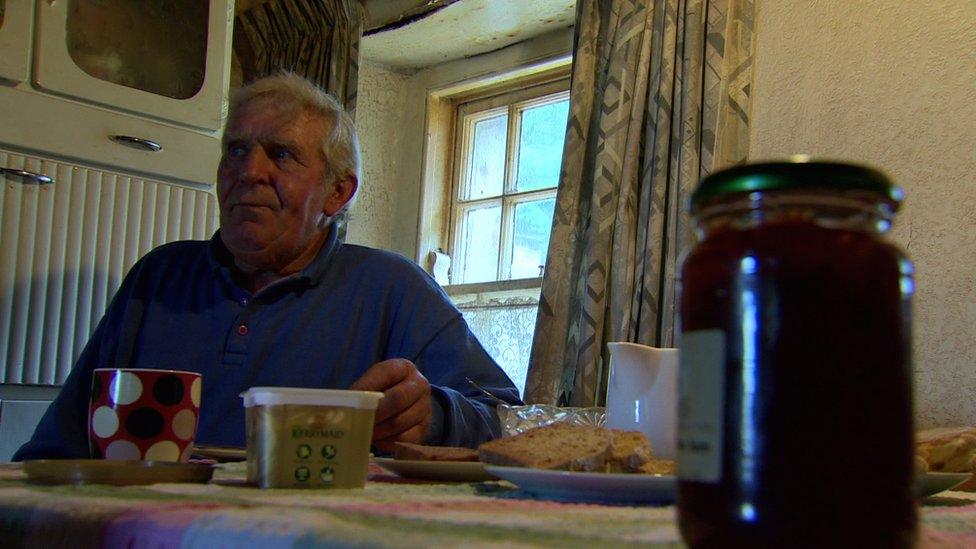
In his younger years, Mr Quigley re-thatched the roof himself
Seacoast is one of about 150 thatched cottages left in Northern Ireland.
The family's case was highlighted by BBC Newsline when it visited the cottage last summer.
At the time, the programme reported how government grants, designed to preserve the buildings, had been frozen.
A year on, Mr Quigley sleeps in a makeshift bed in the living room, as his own bed was trapped under fallen timber in the room they are afraid to enter.
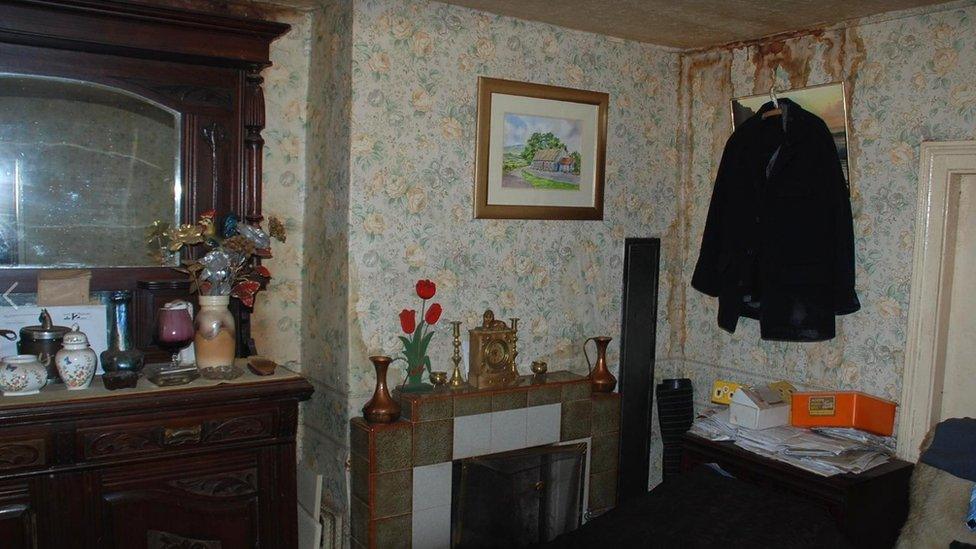
Water is leaking into other rooms in the house because of the damaged roof
"My uncle, over the years, has never taken a penny out of the public purse in terms of maintaining that house, because he always thatched it himself," Mr Canning said.
But the thatch repair is not straightforward. Unlike ordinary straw or water reed which can last up to 30 years, marram thatch must be replaced every three years.
The family are proud of their home's unique heritage, but argue that the pensioners now need some comfort and security in their old age.
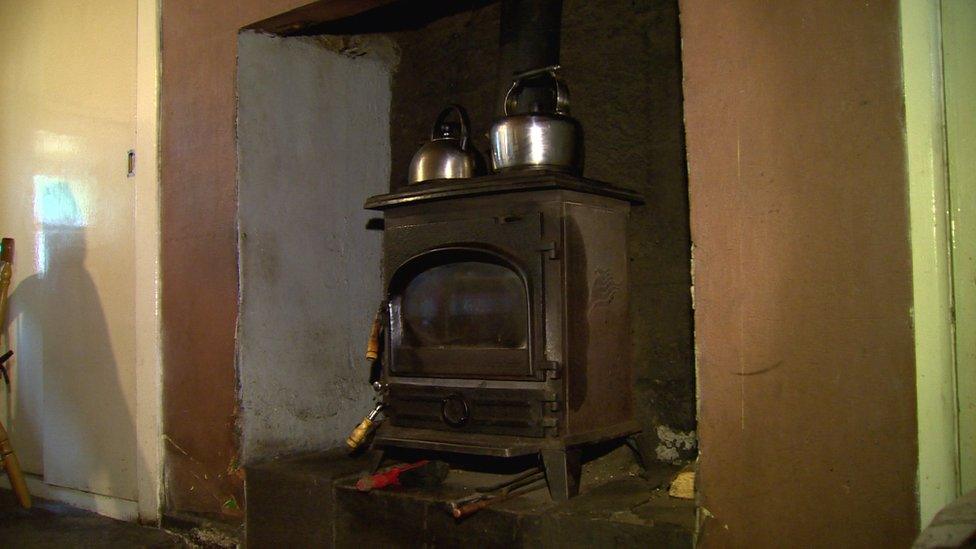
The elderly siblings have no central heating
"People think about thatched cottages as being quaint and romantic and, in many cases, they are, but they are also a sign of deprivation and hardship," Mr Canning said.
"They had to be thatched because people didn't have the money for proper roofs.
'Squalor'
"Edward and Eileen - although they love the place because they've live their all their lives, they were born in it and it means a lot to them - they want to have some luxury in their lives as they get a little bit older."

Mark Canning has been fighting his aunt and uncle's case for four years
"The Housing Executive have offered a renovation grant so they can add a little kitchen and a bathroom, but that work hasn't been able to proceed because of the whole situation with the Northern Ireland Department of Built Heritage."
A spokeswoman for Stormont's Department of Communities said: "The department is conscious of the challenges being faced by the owners of the cottage and departmental officials have recently been discussing this with the family of the owners."
She said the £50,000 offered towards the repair was the "maximum grant available" under the department's Historic Environment Fund.
"We understand that the owners were not able to raise the balance of funding required and so did not proceed with the works."